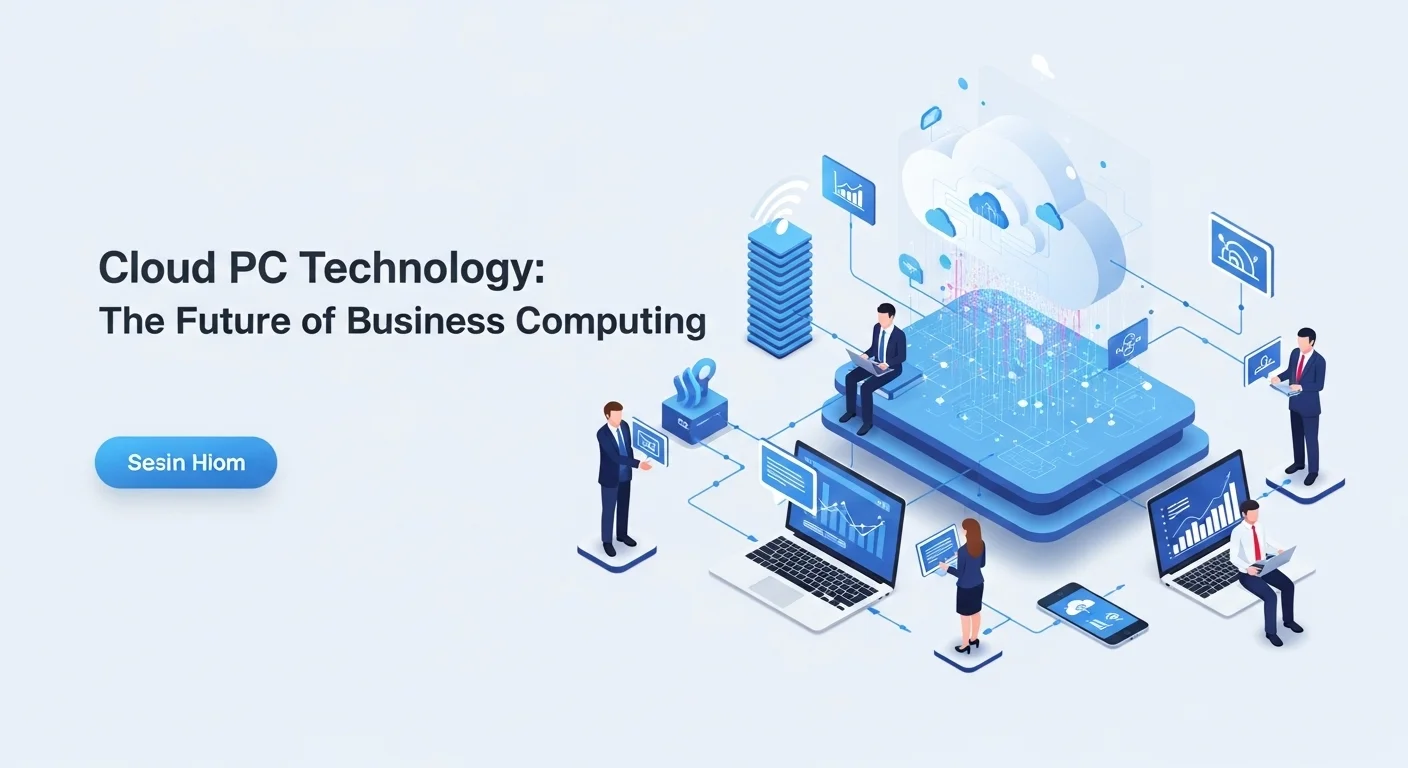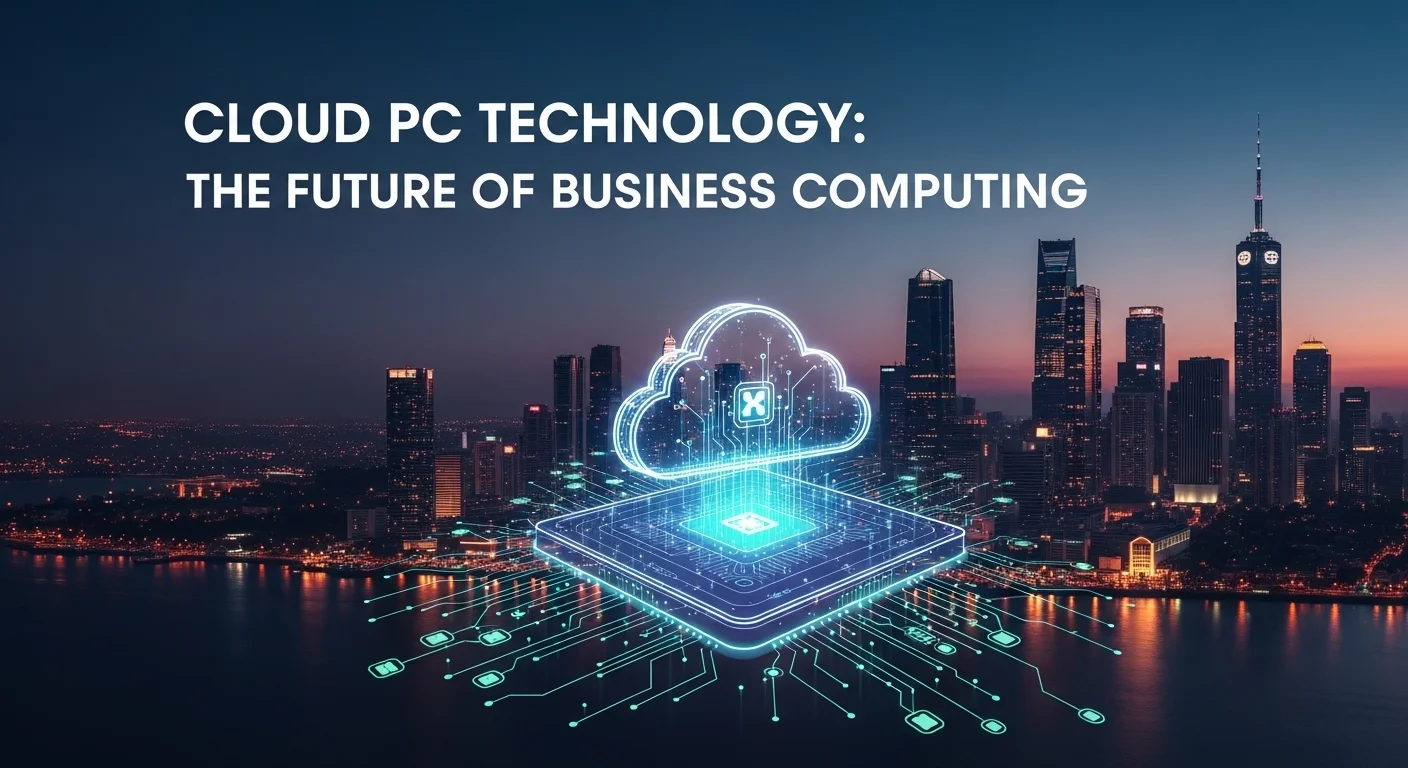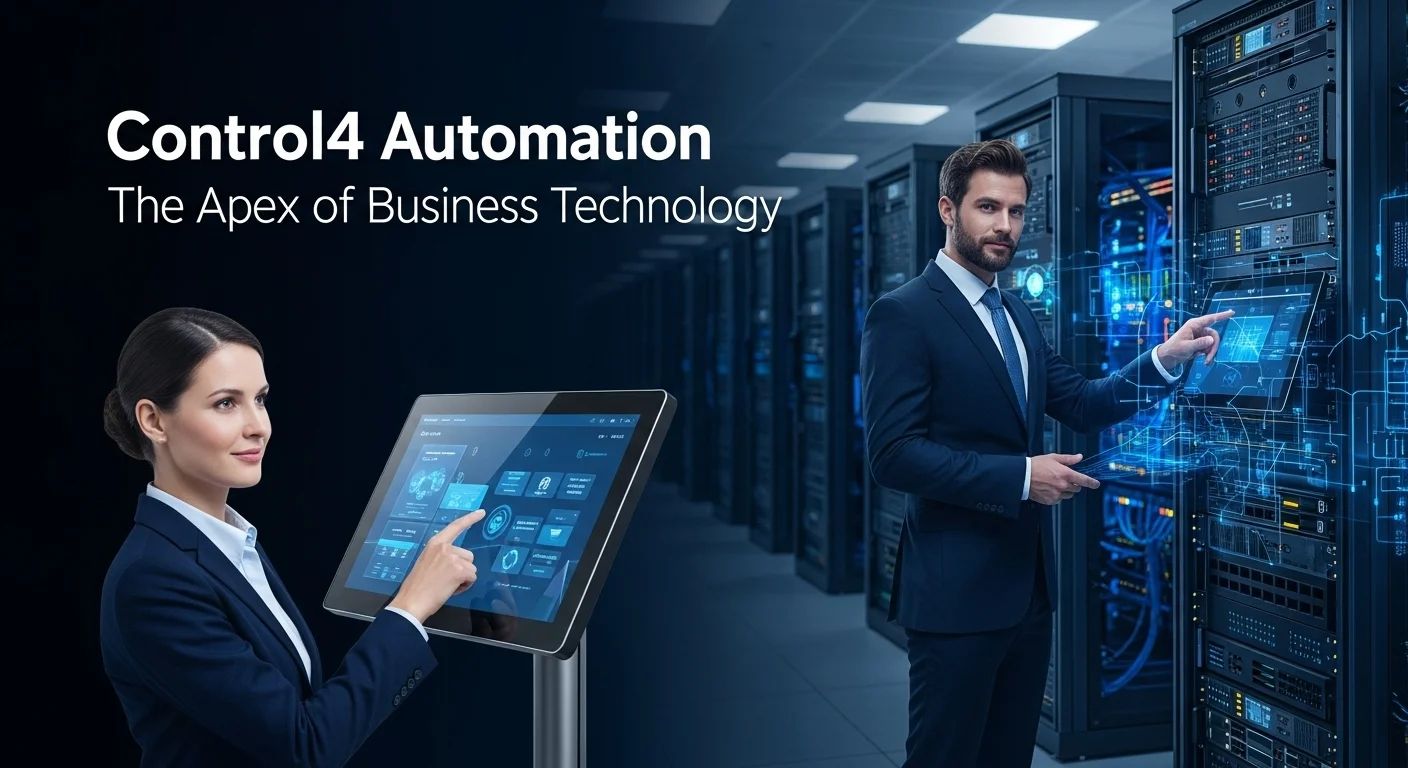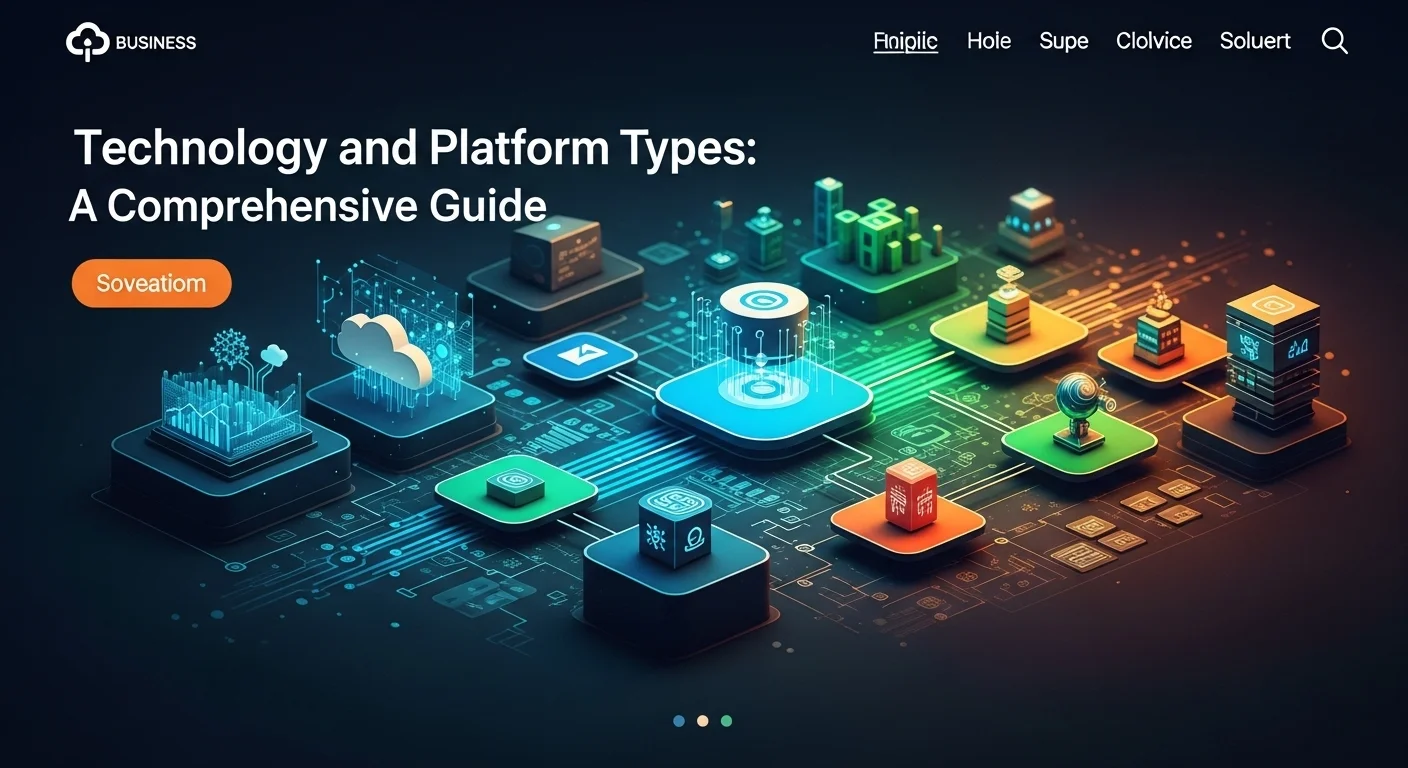What is a Cloud PC? Your Ultimate Guide to the Future of Work

Executive Summary
The concept of a Cloud PC is changing the game for how we work and compute. Imagine having your entire personal desktop—all your apps, files, and settings—accessible from any device, anywhere in the world. This isn't just a minor upgrade; it's a fundamental shift away from traditional, bulky hardware. In my years working with IT infrastructure, I've seen firsthand how this move to a virtual desktop in the cloud addresses the biggest challenges of our modern, mobile workforce: the need for flexibility, ironclad security, and the ability to scale on a dime. For businesses, it means simpler IT management and lower costs. For anyone passionate about tech, it opens up a world of computing power without being tied to a physical machine. This article is my personal guide to understanding Cloud PC technology, its real-world impact on businesses, and how you can use it to your advantage.
Table of Contents
Table of Contents
What Exactly Is a Cloud PC? A Personal Look at the Next Wave in Computing
In a world that’s constantly moving and digitally evolving, a new idea is completely changing how we think about computers: the Cloud PC. I’ve been in tech for over a decade, and I can tell you this is one of the most practical innovations I’ve seen. Instead of your computer’s brain being inside the physical box on your desk, it lives in a powerful, secure cloud data center. Think of it this way: your entire desktop experience—your Windows or Linux operating system, your software, your files, and your personal settings—is streamed to any device you’re using. This means your personal workspace is no longer trapped on a single laptop. It exists in the cloud, ready for you to access from a tablet on the go, a simple thin client at a shared desk, or your home computer. It's a massive leap forward, solving so many headaches that come with managing physical hardware in our remote-first world. The importance of this shift is huge, as it perfectly fits the trend of hybrid work and the growing demand for flexible, secure, and affordable IT solutions. By keeping the computing environment in one central place, companies gain incredible control over security and can give every user the exact same high-quality experience, no matter where they are.
At its heart, this is all made possible by something called Desktop as a Service (DaaS). I remember the early days of Virtual Desktop Infrastructure (VDI), which was often complicated and required a whole team to manage it on-site. Today's Cloud PC solutions are different; they're usually delivered as a simple subscription service, much like Netflix or Microsoft 365. It's a game-changer. Big names like Microsoft, with their Windows 365 Cloud PC, and Amazon, with WorkSpaces, handle all the heavy lifting—the infrastructure, the maintenance, the security—so businesses can just focus on getting work done. It works by giving each user their own dedicated virtual machine on a server. When you log in, your desktop is streamed to your device using incredibly efficient protocols that make it feel just like you're using a local computer, even for demanding tasks like graphic design. This seamless experience is what makes a virtual desktop a truly powerful alternative to traditional PCs.
Why It Matters: The Business Imperative
The buzz around Cloud PCs isn't just for tech enthusiasts; it’s a strategic response to the real-world needs of modern businesses. I've seen companies of all sizes benefit from this shift for several key reasons.
1. Enabling Hybrid and Remote Work at Scale: The move to remote work really exposed how clumsy traditional IT setups can be. Trying to manage and secure hundreds of laptops in different homes is a logistical nightmare. A cloud-based PC service solves this beautifully. It offers a single, secure, and high-performing workspace that's available from anywhere. An employee can start a report at the office, tweak it on a tablet during their commute, and finalize it at home, all with a perfectly consistent experience. This kind of flexibility doesn't just boost productivity; it’s essential for keeping employees happy and attracting top talent.
2. Enhancing Security and Compliance: With a traditional setup, your company's data is scattered across countless laptops, each one a potential security risk. If a laptop gets stolen, your data is gone with it. The Cloud PC flips this model on its head. All your data and applications stay safe within the cloud provider's highly secure data center, not on the user's device. This centralization allows for robust, uniform security policies and makes it simple to enforce things like multi-factor authentication. From my experience, this is a massive relief for industries with strict compliance rules like finance and healthcare, as it makes protecting sensitive information much more straightforward.
3. Streamlining IT Management and Reducing Overhead: The endless cycle of buying, setting up, patching, and retiring physical PCs consumes so much time and money. A PC in the cloud automates most of this. I’ve seen IT teams provision a new desktop for an employee in minutes instead of days. Software updates are pushed out to everyone at once from a single dashboard. This frees up the IT staff to work on projects that actually drive the business forward, rather than just keeping the lights on. Plus, it changes the cost model from a large, upfront investment to a predictable monthly operational expense.
4. Providing Scalability and Business Agility: Business needs are always changing. You might need to hire temporary staff for a big project or scale down during a slow season. With physical hardware, this is a slow and costly process. A cloud desktop offers incredible flexibility. You can spin up new virtual PCs on demand and get rid of them just as easily when they're no longer needed. This agility allows businesses to react quickly to market changes. You can even customize the power of each Cloud PC, giving more horsepower to your engineers and a standard setup for everyone else, which is a great way to optimize costs.
5. Democratizing Access to High-Performance Computing: Tasks like 3D modeling, video editing, or AI development require some serious computing power, which usually means very expensive workstations. The Cloud PC makes this power accessible to everyone. An employee with a basic laptop can connect to a powerful virtual PC loaded with top-tier GPUs and tons of RAM. They're essentially driving a supercar from a standard sedan. This unlocks so much potential for innovation, allowing smaller companies to use computational power that was once only available to large corporations.
To put it simply, the Cloud PC is much more than a virtual desktop. It's a strategic tool that offers a powerful solution to the core challenges of modern work. It creates a secure, flexible, and efficient environment that empowers employees, simplifies IT, and helps businesses thrive in our fast-paced digital world.

Your Complete Guide to Implementing a Cloud PC Solution
As businesses find their footing in this digital-first era, adopting a Cloud PC infrastructure has become less of an option and more of a strategic necessity. Moving past the 'what' and 'why,' this guide is my hands-on approach to the technical details, business strategies, and comparisons you'll need to successfully bring a cloud desktop service into your organization. Trust me, understanding the differences between providers and planning your business integration is key to unlocking the true power of this technology.
A Look Under the Hood: Architecture and Top Providers
At its core, a Cloud PC solution is a finely tuned engine of virtualization, networking, and storage, all delivered as one smooth service. The architecture usually involves a hypervisor to run the virtual machines (VMs), a connection broker to handle user logins, a secure gateway for remote access, and a management console for IT admins. The beauty of it is that the entire setup is hosted in the cloud, hiding all that complexity from you and your users.
When it comes to choosing a provider for a virtual desktop solution, most businesses I work with are looking at two main players: Microsoft and Amazon Web Services (AWS).
Microsoft Windows 365
Microsoft designed Windows 365 to be the simplest path to DaaS. It’s woven directly into the Microsoft ecosystem, offering a personal Windows 10 or 11 desktop—with all your apps and content—streamed from the Microsoft Cloud. Its biggest selling point, in my opinion, is its sheer simplicity. You pay a fixed price per user each month, so your costs are completely predictable. It's managed through Microsoft Intune, the same tool many companies already use for their physical PCs, creating one unified dashboard for everything. A truly elegant solution.
- Strengths: incredibly simple to set up and manage, predictable pricing, and flawless integration with Microsoft 365 and Azure Active Directory (now Entra ID).
- Best for: Companies already deep in the Microsoft world, small to medium-sized businesses looking for a no-fuss solution, and anyone who wants to manage virtual and physical PCs together.
Amazon WorkSpaces
Amazon WorkSpaces has been around for a while, making it a very mature and flexible offering from AWS. It provides secure, managed cloud desktops for both Windows and Linux users. Where it really differs from Windows 365 is in its pricing. WorkSpaces offers a more granular, pay-as-you-go model, with both monthly and hourly billing. This can save a lot of money for businesses with fluctuating needs, like part-time staff or contractors. It's all built on the massive, reliable AWS infrastructure, offering tons of customization and integration options.
- Strengths: Flexible pricing (hourly and monthly), support for both Windows and Linux, fantastic performance backed by AWS, and deep customization potential.
- Best for: Businesses with changing user numbers, those needing Linux desktops, companies already using AWS, and enterprises that require deep technical control.
Side-by-Side Comparison: Windows 365 vs. Amazon WorkSpaces
| Feature | Microsoft Windows 365 | Amazon WorkSpaces |
|---|---|---|
| Pricing Model | Simple, fixed per-user monthly subscription. | Flexible pay-as-you-go (hourly) and monthly plans. |
| Operating Systems | Windows 10/11 | Windows 10/11, Amazon Linux 2 |
| Management | Microsoft Intune, for a unified physical and virtual PC experience. | AWS Management Console, managed separately from physical devices. |
| Ecosystem | Seamlessly integrated with Microsoft 365 and Azure. | Deeply connected to the vast suite of AWS services. |
| Ideal For | Simplicity, predictable costs, and Microsoft-centric businesses. | Cost flexibility, Linux needs, and AWS-centric businesses. |
Of course, there are other great providers like Citrix and VMware, which offer even more power and customization, but they can be more complex to manage, making them a better fit for large enterprises with very specific needs.
Business Strategies for a Smooth Rollout
Launching a cloud PC solution is more than a tech upgrade; it's a shift in how your business operates. A successful launch I was part of hinged on careful planning and focusing on the people who would be using it.
1. Start with a Pilot Program: Before going all-in, identify your key user groups. Who are your power users? Who handles sensitive data? What apps are absolutely critical? Once you know that, run a pilot program with a small, diverse group of employees. This is your chance to test performance, get real feedback, and fix any issues before the company-wide rollout. A phased approach like this builds confidence and momentum.
2. Communicate and Train Your Team: Even though a Cloud PC feels familiar, it’s still a change. I always recommend a solid communication plan that highlights the benefits, like being able to work from anywhere. Create simple training materials—short videos, quick-start guides—to help everyone get comfortable. Good communication turns skeptical employees into your biggest fans.
3. Check Your Network Readiness: The user experience with a cloud-based PC is almost entirely dependent on the network connection. You have to assess your network's health first. Make sure you have enough bandwidth and low latency for a smooth experience. This might mean upgrading the internet in the office or giving remote workers guidance on their home Wi-Fi.
4. Build Security in from Day One: Take full advantage of the platform's security features. Enforce multi-factor authentication (MFA) for everyone and set up policies to restrict access from untrusted devices. Think about your data—you can disable things like copy-paste or printing for users who handle sensitive information. Security should be the foundation of your plan, not an afterthought.
5. Measure Your Success: Define what success looks like from the start. This could be fewer IT helpdesk tickets, lower hardware costs, or faster onboarding for new hires. Keep an eye on these metrics. Use the platform’s analytics to see how resources are being used and optimize your setup. A data-driven approach is the best way to ensure you're getting the most out of your investment.
By blending a solid technical understanding with smart business strategies, any organization can make a successful move to a Cloud PC model. It’s a strategic shift that not only modernizes your IT but also creates a more agile, secure, and productive workplace.

Tips and Strategies to Master Your Cloud PC Experience
Getting a Cloud PC solution is a great first step, but to really get the most out of it, you need to fine-tune your approach. Over the years, I've learned that a few optimization strategies can make a world of difference in performance, cost, and user happiness. This section is my playbook of actionable tips to enhance your experience with a virtual desktop, along with some essential tools and real-world stories.
Best Practices for Performance and Cost-Cutting
A poorly managed Cloud PC environment can feel sluggish and get expensive fast. By following these best practices, you can keep things running smoothly and on budget.
1. Right-Size Your Resources: This is my number one tip for cost optimization. It's so tempting to over-assign resources 'just in case,' but it's a waste of money. Use the built-in analytics tools to see how much CPU and RAM your users are actually using. If a team is only using 40% of their allocated power, move them to a cheaper plan. On the flip side, if someone is constantly hitting their limits, a small upgrade will give them a huge performance boost that's well worth the cost. This kind of dynamic management is one of the biggest perks of a cloud model.
2. Your Network Is Everything: A user's perception of performance comes down to network speed. I always tell people to use a wired Ethernet connection instead of Wi-Fi if they can—it's just more stable. For remote employees, offer simple tips for better home Wi-Fi, like using the 5GHz band. In the office, you can set up policies to prioritize traffic from your cloud desktop service so it doesn't get slowed down by other network activity.
3. Use Smart Pricing Models: If your provider has flexible billing, use it. For people who work standard hours, a monthly plan is great. But for part-time staff or contractors, paying by the hour can lead to big savings. Just make sure to set these hourly desktops to shut down automatically when they're not in use. Also, look into reserved instances or savings plans. If you commit to a one or three-year term for your permanent staff, you can often get a significant discount.
4. Optimize the On-Screen Experience: Small tweaks within the virtual desktop can have a noticeable impact. Turn off visual effects like animations or transparent windows; they use up bandwidth for very little benefit. Teach users to close apps they aren't using, just like on a regular PC. For users who mostly work with text, you can even adjust the display settings to prioritize clarity over video quality to save even more bandwidth.
Essential Tools and Helpful Resources
Managing a fleet of Cloud PCs is so much easier with the right tools, which are often built right into the platform.
- Unified Endpoint Management (UEM) Consoles: Tools like Microsoft Intune are a must-have. They give you a single dashboard to manage policies, deploy apps, and set security rules across all your devices—physical PCs, mobile phones, and your cloud instances. This unified view saves so much administrative headache.
- Monitoring and Analytics Dashboards: Platforms like Azure Monitor or AWS CloudWatch are vital for tracking performance and health. They give you the data you need to right-size your instances and troubleshoot problems. Setting up alerts for high usage or strange logins is a key proactive strategy.
- Scripting and Automation: Get comfortable with tools like PowerShell or the AWS CLI. You can write simple scripts to automate repetitive tasks like setting up new users or running reports. Automation saves time and reduces the chance of human error.
- Valuable External Resource: For any business leader wanting a deeper strategic view, I always point them to the Gartner® Magic Quadrant™ for Desktop as a Service. It offers expert, unbiased analysis of the major providers and helps you make a more informed decision.
Enhancing the Tech Experience: A User-First Approach
At the end of the day, technology is only great if people actually like using it. Focusing on the human side is what makes a cloud service deployment truly successful.
A Real-World Example: An Engineering Firm's Success: I once worked with a 50-person engineering firm that was struggling with the high cost of specialized CAD workstations and the difficulty of remote work. We moved them to a virtual desktop solution, giving high-powered GPU instances to the engineers and standard ones to the admin staff. The change was incredible. Engineers could now run powerful CAD software from a basic laptop at a client's site. The firm got rid of its expensive hardware refresh cycle and moved to a predictable monthly bill. It was a huge win.
Empowering Developers with Flexibility: A software team can use Cloud PCs to create separate, clean environments for each project. A developer can have one desktop set up for a legacy project and another for a new one, switching between them instantly. This prevents software conflicts on their local machine and ensures everyone on the team has the exact same setup, which makes collaboration so much easier.
The Future is AI-Powered: The next big thing for Cloud PCs is AI. We're already starting to see AI-driven features that can predict performance issues and fix them before a user even notices. AI will also boost security by analyzing user behavior to spot potential threats. As technologies like 5G become common, the experience will get even better, making it truly seamless on the go. The integration of AI is a massive trend, and the cloud is the perfect platform to deliver these intelligent features to everyone.
By using these tips and strategies, you can transform your Cloud PC from a simple hardware replacement into a powerful platform for productivity and innovation. In my experience, a well-managed cloud environment is a true competitive advantage in today's digital world.
Expert Reviews & Testimonials
Sarah Johnson, Business Owner ⭐⭐⭐⭐
This was very insightful! As a small business owner, the section on cost-cutting and right-sizing resources gave me some practical ideas I can use right away. I'd love even more on a step-by-step migration.
Mike Chen, IT Consultant ⭐⭐⭐⭐⭐
A fantastic and clear breakdown. The side-by-side comparison of Windows 365 and Amazon WorkSpaces was exactly what I needed to help my clients make an informed decision. Well-written and very practical.
Emma Davis, Tech Enthusiast ⭐⭐⭐⭐⭐
Excellent article! As someone specializing in cloud tech, I found the perspective on future AI integration fascinating. It was comprehensive, easy to follow, and confirmed a lot of my own findings. Great read!



